Training sorties using L-39NG jet trainers have been conducted regularly. The L-39NG, a newly acquired jet trainer, was recently equipped for Regiment 910. Being assigned to perform at the national celebration is both an honor and an opportunity for the unit to demonstrate its capacity of receiving and mastering modern aircraft, weapons, and equipment and its readiness to fulfill any assigned mission.
    |
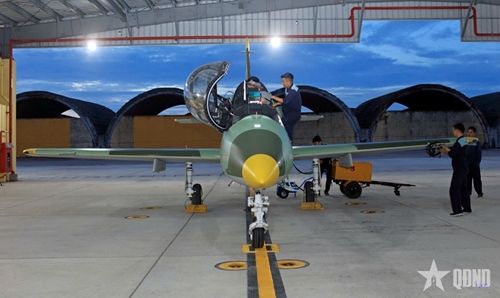 |
|
L-39NG technical team inspects and adjusts aircraft parameters before the sortie. |
From the early morning, L-39NG technical teams are already on the tarmac, conducting meticulous checks and fine-tuning technical parameters. Once the aircraft are cleared, a weather reconnaissance flight lands safely, and the mission briefing concludes. Pilots quickly move to the flight line, ready for the four-ship formation sortie. After receiving and inspecting their aircraft, the jets sequentially start engines, taxi to the holding point, and line up on the runway. The roar of engines at full power echoes across the vast airbase.
    |
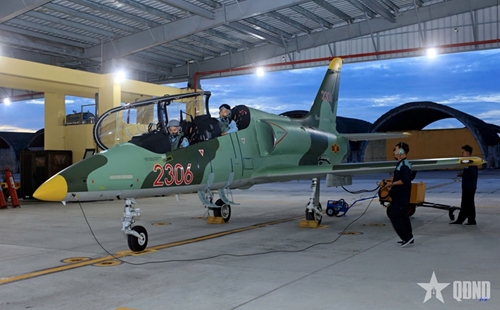 |
|
Regiment 910 pilots prepare to receive their aircraft. |
Each two-ship flight takes off in quick succession, slicing through the sky. The L-39NG jets, with their fresh paint, blend smoothly into the blue sky. Once airborne, the four-ship formation assembles into a stepped echelon, flying at 20-meter spacing and a 5–7-meter vertical offset, passing over the designated ceremonial stand at an altitude of 250 to 300 meters. The tight formation, accompanied by the thunderous roar of jet engines, leaves a lasting impression on spectators.
According to Second-in-Command Officer in charge of Military Training of Regiment 910 Senior Colonel Doan Trung Kien, upon receiving orders to accept and integrate the new L-39NG aircraft, the unit took comprehensive steps to upgrade its infrastructure and equipment. In addition to the aircraft, the unit also received advanced classroom systems, flight simulators, and airfield navigation systems.
    |
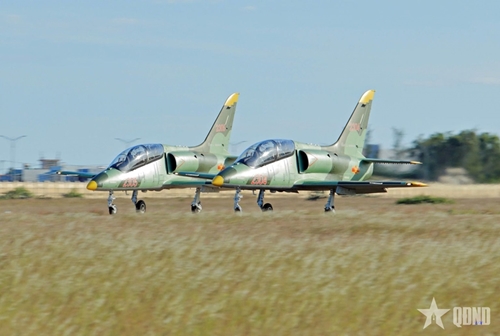 |
|
A pilot taxis the L-39NG to the holding point, ready for takeoff. |
To effectively master the new aircraft, selected pilots and technical personnel were sent abroad for language and technical training. The regiment developed a complete set of training documents for the L-39NG program, including updated manuals, briefing rooms, operational charts, cockpit diagrams, training aids, sample records, and audio-visual tools.
The unit also prepared examination materials, answer keys, lesson plans, and L-39NG theory and practical transition training. As of now, all trainees have successfully completed transition courses, achieved operational readiness, and are fully qualified. Many pilots have also earned certification to instruct in a range of skills including basic maneuvers, tactical flying, formation, aerial and ground target attacks, among others.
    |
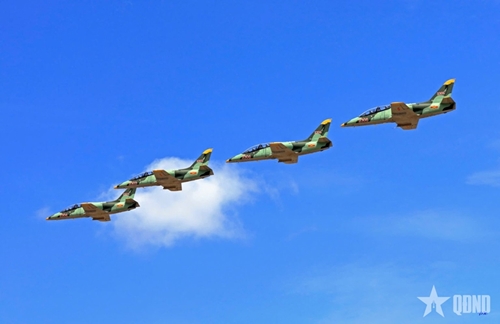 |
|
Four L-39NG aircraft fly in a stepped echelon formation. |
When tasked with planning three-ship and four-ship formation flights for the ceremony, the unit consulted experts and studied the experience of other units. Flight plans were developed based on the technical and tactical advantages of the L-39NG, such as its advanced control system, broad speed range, and superior maneuverability. Pilots selected for these missions are veterans with extensive experience and logged hours in two-ship formation flying.
Before each practical training flight, detailed preparation is conducted, from map-based flight demonstrations, simulator sessions to close coordination between cockpit pairs, and clear communication protocols within the formation.
    |
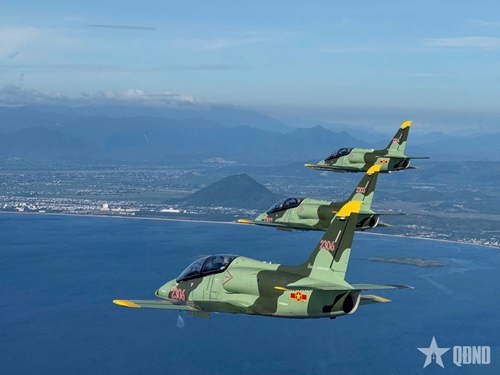 |
|
View from the No.4 aircraft cockpit |
Senior Colonel Nguyen Van Thu, Deputy Political Commissar of Regiment 910 and leader for the four-ship formation, said that from engine start to shutdown, the lead pilot must constantly observe, calculate, and issue timely commands to ensure formation integrity. Maintaining appropriate speed and flight parameters is crucial to helping all members hold their positions. The lead must also give clear pre-maneuver instructions and avoid sudden changes in direction, altitude, or speed.
In addition to internal coordination, the flight leader must maintain close communication with air traffic controllers to ensure the formation flies precisely and elegantly over the ceremonial area. Constant monitoring of weather conditions is also vital for safety.
    |
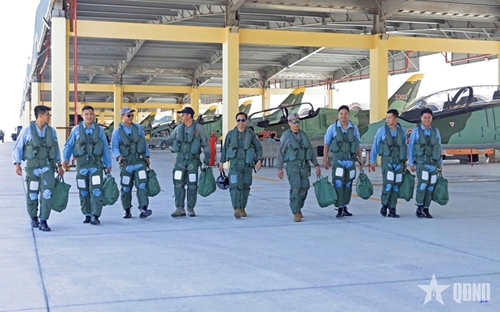 |
|
Joy and pride among Regiment 910 pilots after a successful training flight |
With over ten successful formation training flights, the skills and confidence of Regiment 910 pilots have remarkably improved. The unit is now actively preparing for relocation, final rehearsals, and the official mission during the upcoming national celebration.
Translated by Tran Hoai